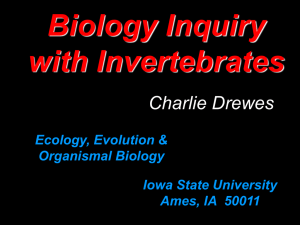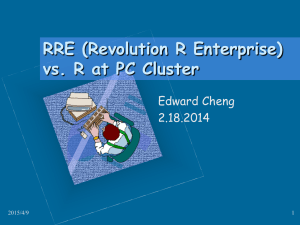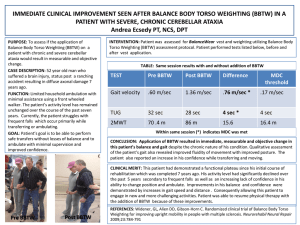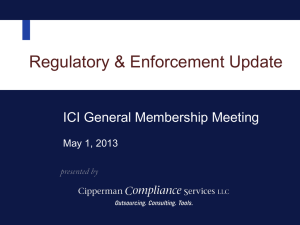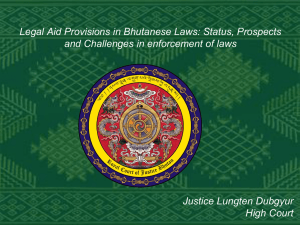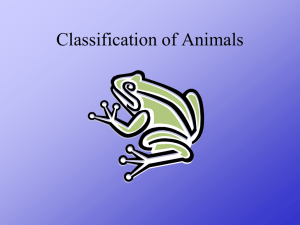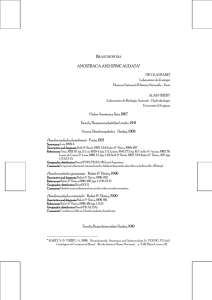PPT - Department of Ecology, Evolution, and Organismal Biology
advertisement
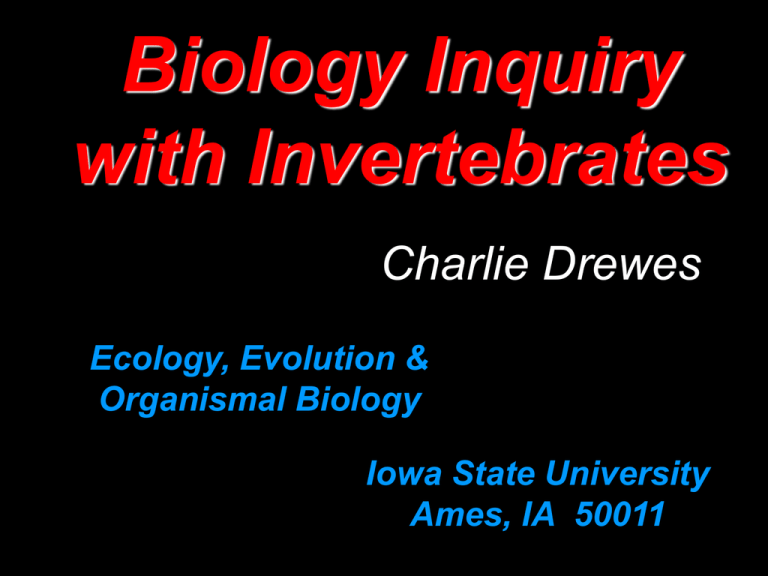
Biology Inquiry with Invertebrates Charlie Drewes Ecology, Evolution & Organismal Biology Iowa State University Ames, IA 50011 “ I hear and I forget, I see and I remember, I do and I understand.” Confucius ► Guided inquiry “BIOLOGY in ACTION” ► Open-ended inquiry ”Stuck-on Artemia” ► Independent Inquiry “Biological Smoke Detectors” ‘BIOLOGY in ACTION’ 31 Interactive & Computational Animations WEB-based and CD (non-proprietary) INTERDISCIPLINARY AREAS: Biology, Math, Physics TOPICS & FOCAL POINTS: Locomotion Biomechanics Cell Biology Animal Behavior Physiology Development Invertebrate Biology CURRICULAR UTILITY: adjuncts to hands-on laboratory inquiries with living organisms adjuncts to lecture / discussion (homework or student presentations) focal points for problem-based learning (computation & data analysis) RED = interactive animations with computations and control features BLACK = GIF animations with questions and links ► ► ► LINK to CONTENTS Lumbriculus variegatus California blackworm Annelida (Oligochaetea) Hands-on Lab Investigations with Living Lumbriculus Segment Regeneration (ABLE) (development; asexual reproduction) Circulatory Function (ABT) (blood flow, pulse rate) Locomotion & Movement (ABT) (swimming, crawling, reversal behavior) Animations of Lumbriculus blood vessel pulsations: Adjunct to lab inquiry of circulation in living worms Interactive format Circulatory Computations pulse frequency (pulse waves /sec) pulse velocity (mm /sec) blood volume (cc3 / time) 0 sec 1 sec 2 sec 3 sec 4 sec 5 sec Animation of helical swimming in Lumbriculus: A follow-up to student lab inquiry of locomotion in living worms T A I L T O U C H Helical swimming in Lumbriculus: A unique form of animal locomotion elapsed time (f1f7) = 0.2 sec direction of wave & backthrust forward velocity = ? wave frequency = ? wave velocity = ? Reynolds number = ? direction of swimming The Formation of Vegetable Mould, through the Action of Worms, with Observations on Their Habits by Charles Darwin 1881 Animation of peristaltic crawling… …a follow-up to student lab inquiry about hydrostatic skeletons & locomotion without appendages in living invertebrates (e.g., terrestrial and aquatic annelid worms) circular muscle wave CM CM CM longitudinal muscle wave LM LM LM ELONGATED SEGMENT: length = 17.5 mm; diameter = 13 mm volume = π · r2 · length = 2,321 mm3 I I SHORTENED SEGMENT: length = 7.5 mm; diameter = 20 mm volume = π · r2 · length = 2,355 mm3 Open-ended inquiry with living crustaceans Artemia franciscana North American brine shrimp Artemia fertilized eggs in brood sac X life cycle winter ‘eggs’ Adult female HATCH transparency strip with grid 10 mm x 10 mm strip of double-stick tape covers grid plastic petri dish tape holds strip to dish “Paint” cysts onto tape with small, soft, dry paintbrush STUCK-on ARTEMIA Technical Advantages easy handling & transfer of cysts uses small, quantifiable number of cysts follow development of individual cysts cysts stay in single focal plane use dissecting or compound microscope manipulation of many relevant variables Hatching of encysted Artemia embryos Encysted late gastrula stage Cyst hydrates and swells Cyst wall splits Membrane-bound “umbrella” stage Nauplius larva emergence Each day, a pipet is used to remove and count hatched, swimming nauplius larvae 100 % H A T C H 80 60 40 20 0 day 0 day 1 day 2 day 3 day 4 Experimental variables PHYSICAL & CHEMICAL ENVIRONMENT Temperature (heating, cooling, freezing) Sun light (UV) Microwave irradiation Salinity (hypo- & hyperosmotic) Repeated hydration Dissolved oxygen Toxicants (pollutants, pharmacological agents) Measurements & End-points Hatching % Hatching time-course Developmental anomalies Larval motility Molting & growth Independent inquiry CONCEPTS & PRACTICAL IDEAS 1) 2) 3) 4) 5) 6) 7) 8) (non-cookbook) Invertebrates as toxicity test organisms Selection of test chemical(s) Exposure / treatment protocols End-points (lethal versus sublethal effects) Concentration range-finding (preliminary expts) Final testing and analysis Materials, supplies, resource references SAFETY ISSUES & GLOSSARY Invertebrates are more than… …creepy, crawly novelties …taxonomic survey material …anatomy & dissection material Use of living invertebrates for biology lab inquiries… … engages & enlivens interest … makes biology more than a ‘spectator sport’ … promotes analytical thinking Take-Home Materials CD: “BIOLOGY in ACTION” - 31 animations & “Freshwater Invertebrates” - PowerPt file Copy: Contents & Animation Q/A’s for Instructor Copy: Student lab inquiry: “ Stuck-on Artemia” Reprint: “Biological Smoke Detectors” Characea (stoneworts) giant algal cells (Chara, Nitella) Interactive format 0 sec 2 sec 4 sec 6 sec 8 sec stream velocity = ? ( m /sec ) R R R R gait analysis R R running velocity = ? (cm / sec) relative velocity = ? (body lengths / sec) Pulsations in Dorsal Blood Vessel of Blackworm (Lumbriculus) Swimming by Means of Sinusoidal Waves EXAMPLES from CD… Nematode worms (Turbatrix aceti = vinegar eel) Nematomorph worms (horsehair worm) Leech (an annelid) head Interactive format forward velocity = ? wave frequency = ? wave velocity = ? Reynolds number = ? jump amplitude = ? (absolute & relative) jump duration = ? gravitational effects
